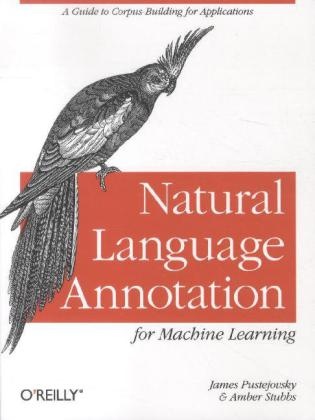En savoir plus
Create your own natural language training corpus for machine learning. Whether you're working with English, Chinese, or any other natural language, this hands-on book guides you through a proven annotation development cycle - the process of adding metadata to your training corpus to help ML algorithms work more efficiently. You don't need any programming or linguistics experience to get started.
Using detailed examples at every step, you'll learn how the MATTER Annotation Development Process helps you Model, Annotate, Train, Test, Evaluate, and Revise your training corpus. You also get a complete walkthrough of a real-world annotation project. Define a clear annotation goal before collecting your dataset (corpus) Learn tools for analyzing the linguistic content of your corpus Build a model and specification for your annotation project Examine the different annotation formats, from basic XML to the Linguistic Annotation Framework Create a gold standard corpus that can be used to train and test ML algorithms Select the ML algorithms that will process your annotated data Evaluate the test results and revise your annotation task Learn how to use lightweight software for annotating texts and adjudicating the annotations
This book is a perfect companion to O'Reilly's Natural Language Processing with Python.
Table des matières
Preface
Chapter 1: The Basics
Chapter 2: Defining Your Goal and Dataset
Chapter 3: Corpus Analytics
Chapter 4: Building Your Model and Specification
Chapter 5: Applying and Adopting Annotation Standards
Chapter 6: Annotation and Adjudication
Chapter 7: Training: Machine Learning
Chapter 8: Testing and Evaluation
Chapter 9: Revising and Reporting
Chapter 10: Annotation: TimeML
Chapter 11: Automatic Annotation: Generating TimeML
Chapter 12: Afterword: The Future of Annotation
List of Available Corpora and Specifications
List of Software Resources
MAE User Guide
MAI User Guide
Bibliography
Colophon
A propos de l'auteur
James Pustejovsky teaches and does research in Artificial Intelligence and Computational Linguistics in the Computer Science Department at Brandeis University. His main areas of interest include: lexical meaning, computational semantics, temporal and spatial reasoning, and corpus linguistics. He is active in the development of standards for interoperability between language processing applications, and lead the creation of the recently adopted ISO standard for time annotation, ISO-TimeML. He is currently heading the development of a standard for annotating spatial information in language. More information on publications and research activities can be found at his webpage: pusto.com. Amber Stubbs is a Ph.D. candidate in Computer Science at Brandeis University in the Laboratory for Linguistics and Computation. Her dissertation is focused on creating an annotation methodology to aid in extracting high-level information from natural language files, particularly biomedical texts. Information about her publications and other projects can be found on her website: http://pages.cs.brandeis.edu/~astubbs/.
Résumé
Create your own natural language training corpus for machine learning. This example-driven book walks you through the annotation cycle, from selecting an annotation task and creating the annotation specification to designing the guidelines, creating a "gold standard" corpus, and then beginning the actual data creation with the annotation process.

